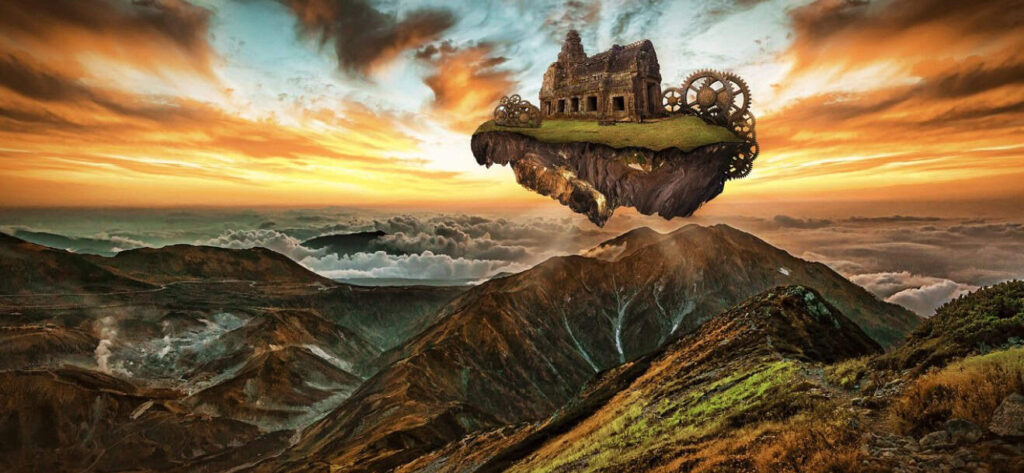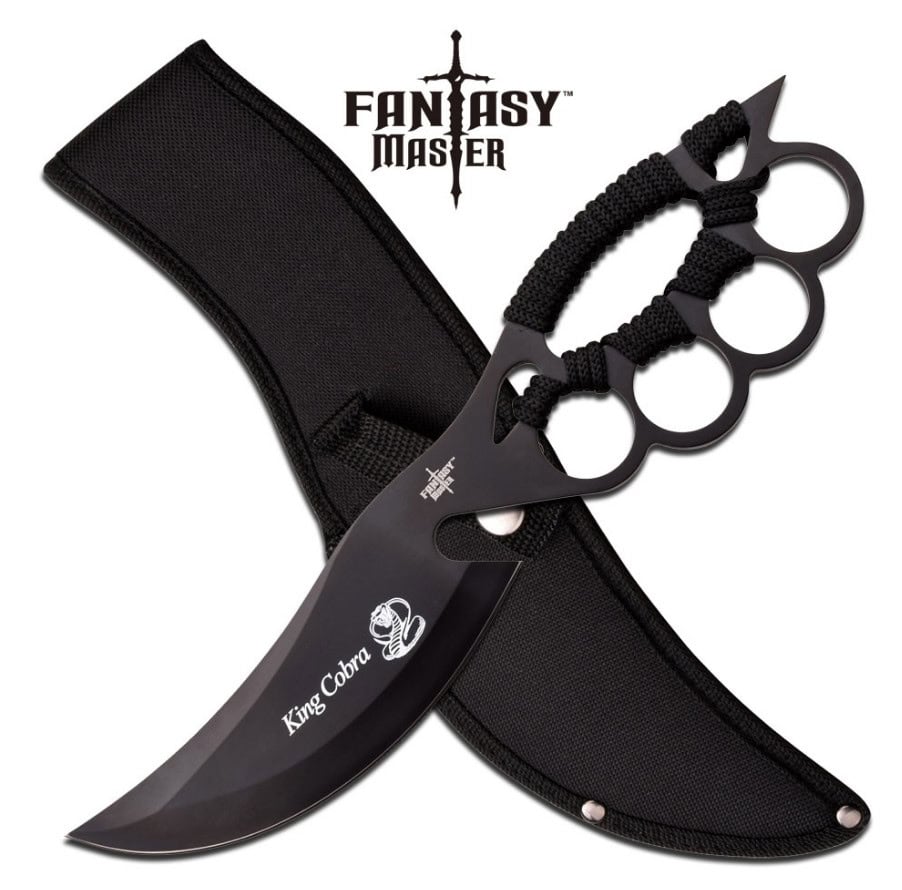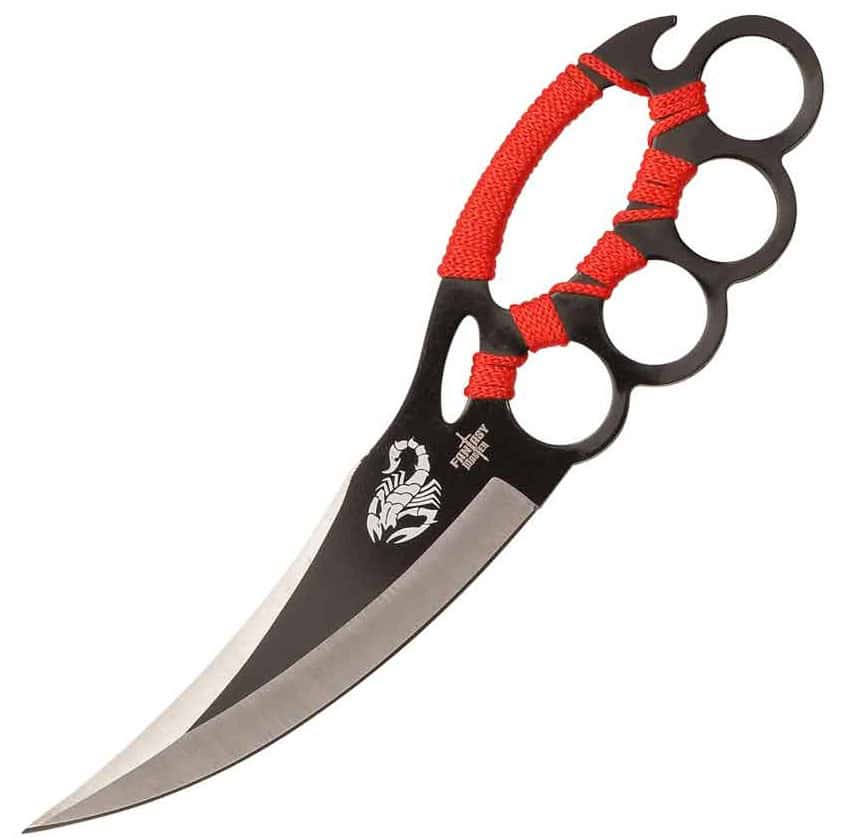Blending Historical Inspiration with Fantasy Trench Knife Design
TLDR: The fantasy trench knife blends the historical practicality of World War I trench knives with imaginative design elements, resulting in visually captivating and unique pieces that appeal to both history buffs and fantasy enthusiasts.
Trench knives have always fascinated me, but the recent surge in fantasy trench knife designs has taken my interest to a whole new level. These fantasy trench knives blend the brutal efficiency of their World War I predecessors with imaginative elements that really catch the eye. In my view, it’s this fusion of historical functionality and creative flair that makes fantasy trench knives so captivating.
They retain the iconic brass knuckle handle and blade combination, but designers add fantastical twists – maybe a dragon-scale pattern on the grip or runes etched along the blade. I’ve seen some fantasy trench knives that look like they’ve stepped right out of a video game or fantasy novel, yet they still pay homage to their historical roots.
It’s this balance of practicality and imagination that, in my opinion, sets fantasy trench knives apart. Whether you’re a history buff, a fantasy enthusiast, or just someone who appreciates innovative weapon design, fantasy trench knives offer something uniquely appealing.
Historical Trench Knives
The story of trench knives is as gritty and intense as the war that birthed them. World War I’s trench warfare created a need for a close-quarters weapon that could be both offensive and defensive. Enter the trench knife – a tool born of necessity and ingenuity.

These knives first appeared around 1915, and let me tell you, they were game-changers. Soldiers in tight, muddy trenches needed something more than their standard-issue rifles when things got up close and personal. The trench knife filled that gap perfectly. In my opinion, it’s one of the most practical weapon designs to come out of that era.
Now, let’s talk about what makes a trench knife a trench knife. The key features are pretty distinctive:
- A sturdy, often double-edged blade, usually about 6-8 inches long.
- A knuckle duster handle, which doubled as brass knuckles.
- A skull-crusher pommel on some models.
These features made the trench knife a versatile weapon. You could stab, slash, punch, and even use the pommel as a last resort. It’s this multi-functionality that I find so impressive about the original design.
As military tactics evolved, so did the trench knife. Post-WWI, we saw various iterations. The U.S. Mark I trench knife, introduced in 1918, is a personal favorite of mine. It had all the classic features and even included a triangular blade that could punch through thick winter uniforms.
During World War II, the design shifted. The M3 fighting knife, for instance, ditched the knuckle duster for a more traditional handle. Some might see this as a step back, but I think it shows how the military adapted the concept for changing combat scenarios.
In the decades since, we’ve seen the influence of trench knives in various military and civilian knife designs. While modern combat knives might not look exactly like their WWI ancestors, I’d argue that the spirit of versatility and close-quarters effectiveness lives on in many current designs.
What Makes a Fantasy Trench Knife
When it comes to fantasy trench knives, we’re stepping into a realm where imagination meets steel. These aren’t your standard military-issue blades; they’re works of art that push the boundaries of design while paying homage to their historical roots.
In my view, a fantasy trench knife is any blade that takes the core concept of a trench knife – that combination of knuckle duster and blade – and adds elements that wouldn’t be practical or possible in a real-world combat situation. Think of ornate engravings, impossible materials, or shapes that defy physics. It’s like taking a piece of history and giving it a magical makeover.
Popular themes in fantasy knife design often draw from mythology, science fiction, and high fantasy. I’ve seen dragon-themed knives with scales along the grip and flame-like blade patterns. There are also futuristic designs that look like they’ve been plucked from a sci-fi movie set, complete with glowing inlays and sleek, angular shapes. Personally, I’m a sucker for the ones that incorporate elemental themes – imagine a trench knife with a handle that looks like it’s made of swirling water or crackling lightning.
Pop culture and media have had a massive influence on fantasy trench knife designs. Video games, in particular, have been a goldmine of inspiration. Games like “Final Fantasy” or “The Elder Scrolls” series often feature elaborate weapon designs that knife makers have adapted into real-world creations.
Movies have also played a significant role. The fantasy and sci-fi genres have given us some iconic blade designs that have inspired countless variations. Think of the energy swords from “Star Wars” or the elven blades from “The Lord of the Rings.” While these aren’t trench knives per se, their influence can be seen in many fantasy trench knife designs.
Anime and manga have contributed their fair share too. The often over-the-top weapon designs in these media have led to some truly unique fantasy trench knives. I’ve seen blades with impossible curves and handles adorned with intricate symbols that would make any otaku proud.
In my opinion, this influence of pop culture on knife design is a double-edged sword (pun intended). On one hand, it’s led to some incredibly creative and visually stunning pieces. On the other, I sometimes worry that we’re moving too far away from the functional roots of the trench knife. But then again, isn’t that the point of fantasy designs? To push boundaries and create something that’s more art than weapon?
Merging History and Fantasy
The real art in creating fantasy trench knives lies in striking the perfect balance between historical accuracy and imaginative design. It’s a delicate dance that, when done right, results in pieces that are both functional and fantastical.
First off, retaining functional elements from historical designs is crucial. A fantasy trench knife should still feel like a trench knife at its core. The knuckle duster handle is non-negotiable in my book – it’s what sets trench knives apart from other blades. The blade itself should maintain a practical length and shape, typically around 6-8 inches and double-edged. I’ve seen some designs that stray too far from this and, while they might look cool, they lose that essential trench knife feel.

When it comes to incorporating fantastical materials and aesthetics, that’s where things get really interesting. I’ve seen designers use everything from faux dragon scales for the grip to iridescent metals for the blade. Some even incorporate “magical” elements like glowing inlays or color-changing materials. While these aren’t practical for actual use, they add a whole new dimension to the knife as a display piece or prop.
One of my favorite trends is the use of modern materials to simulate fantastical ones. For instance, high-tech polymers can be molded and colored to look like anything from ancient wood to alien metal. Some makers use advanced etching techniques to create intricate, seemingly magical patterns on the blade that would be impossible with traditional methods.
Balancing practicality with imaginative features is where the real challenge lies. In my opinion, the best fantasy trench knife designs maintain the basic functionality of a knife while incorporating fantastical elements that don’t interfere with its use. For example, adding ornate engravings or inlays to the knuckle duster can enhance its appearance without compromising its function as a hand guard.
I’ve seen some designs that incorporate imaginative features in clever ways. One that stands out had a hollow handle filled with a glowing liquid, creating the illusion of magical energy without affecting the knife’s balance. Another had a blade made to look like it was wreathed in flames, achieved through clever etching and coloring techniques.
That said, I think it’s important to remember that these are primarily art pieces or props. While they should maintain the spirit of a functional trench knife, they don’t need to be combat-ready. The goal is to create something that could conceivably work as a knife while pushing the boundaries of design.
In my view, the most successful fantasy trench knives are those that make you think, “This could have existed in another world.” They respect the historical design enough that you can see its origins, but they incorporate fantastical elements in a way that feels organic and purposeful.
The Creative Process for a Fantasy Trench Knife
The journey from concept to finished fantasy trench knife is a fascinating one, and I’ve had the pleasure of watching some truly talented designers at work. Their creative process is a blend of historical research, artistic vision, and technical skill.
When it comes to inspiration sources, designers cast a wide net. I’ve seen them draw ideas from everything from ancient mythology to cutting-edge sci-fi. Nature is a big one – the organic curves of a leaf or the texture of tree bark can inspire some really unique handle designs. Historical weapons from different cultures often play a role too. I once saw a fantasy trench knife that beautifully merged the knuckle duster with elements of a Japanese tsuba (sword guard). It’s this kind of cross-cultural blending that really gets my imagination going.
Pop culture is another wellspring of inspiration. Video games, movies, and comic books are goldmines for fantastical weapon designs. I’ve noticed that many designers are also avid gamers or fantasy fans, which shows in their work. Personally, I think this connection to pop culture helps make fantasy trench knives more relatable and desirable to a wider audience.
The techniques for combining historical and fantasy elements are where the real magic happens. It’s all about finding that sweet spot between recognizable trench knife features and imaginative additions. One approach I’ve seen work well is starting with a historically accurate base design and then layering fantastical elements on top. For example, keeping the classic knuckle duster shape but adding intricate, otherworldly engravings.
Another technique is to take a fantastical concept and work backwards to make it more grounded in reality. I remember one designer who started with the idea of a “lava blade” and then figured out how to create that effect using real materials and techniques. The result was a knife that looked magical but was built using practical methods.
3D modeling software has been a game-changer in this field. It allows designers to experiment with complex shapes and patterns that would be difficult to prototype physically. I’ve seen some incredible designs that play with impossible geometries or intricate internal structures, all made possible by digital design tools.
Of course, creating believable yet fantastical designs comes with its challenges. One of the biggest is maintaining a sense of functionality. It’s easy to get carried away with ornate details or extreme shapes, but at the end of the day, it should still look like something that could conceivably be used as a weapon. I’ve seen designs that looked amazing but were so over-the-top that they lost that crucial connection to the original trench knife concept.
Another challenge is balancing creativity with manufacturability. Some designs look great on paper but are nearly impossible to produce in real life. The best designers, in my opinion, are those who understand the limitations of materials and manufacturing processes and can work within those constraints to create something extraordinary.
There’s also the challenge of originality. With so many fantasy trench knives out there, coming up with something truly unique can be tough. I’ve noticed that the most successful designers are those who bring their personal passions and experiences into their work, creating designs that are distinctly their own.
In my view, the creative process behind fantasy trench knives is a perfect blend of art, history, and craftsmanship. It takes a special kind of vision to look at a utilitarian weapon from a century ago and reimagine it as something magical and new. When done right, the result is more than just a knife – it’s a piece of functional art that tells a story and captures the imagination.
Where Can I Get My Own Fantasy Trench Knife?
If you’re looking to add a fantasy trench knife to your collection, there are several avenues to explore. You can start by searching online marketplaces and specialty knife forums, where enthusiasts often buy, sell, and trade unique pieces. Custom knife makers and blacksmiths who specialize in fantasy designs are another great option, offering bespoke creations tailored to your preferences.
All Ninja Gear

What I Like:
- 11″ Overall Length: The fixed blade knife measures 11 inches in total, providing a robust and substantial feel.
- 5.5″ Stainless Steel Blade: Featuring a 3mm thick black painted blade, this knife is both durable and visually striking.
- Green Cord Wrapped Handle: The 5.5-inch handle is wrapped in green cord, offering a secure grip and a unique look, complemented by a 600D nylon sheath for safe storage.
SKD

What I Like:
- Razor-Sharp Blade: It has a razor-sharp 6″ 3Cr13 stainless steel blade with a menacing fantasy curved design and sharp serrations on the spine.
- Spiked Knuckle Guard Handle: The 3Cr13 stainless steel, spiked knuckle guard handle has an ABS grip, which has been 3D printed with a wood grain.
- Tough Nylon Belt Sheath: The 15″ overall fantasy fixed blade can be stored and carried in its tough nylon belt sheath, designed specifically for it.
Dark Knight Armoury

What I Like:
- Knuckle Protection: The knife features finger-protecting rings for a secure grip and added safety during use.
- Durable Construction: It boasts a stainless steel blade with a cord-wrapped handle, making it robust and reliable.
- Stylish and Practical: The knife includes a scorpion graphic, a two-tone blade, and comes with a nylon sheath for easy carry and storage.
Final Thoughts
The allure of a fantasy trench knife lies in its seamless blend of historical roots and imaginative design. These knives manage to respect their World War I origins while incorporating fantastical elements that elevate them to works of art.
The fusion of practical knuckle duster handles with intricate engravings and creative materials makes each fantasy trench knife uniquely appealing. I particularly enjoy how designers draw inspiration from mythology, pop culture, and nature to craft knives that seem to leap from the pages of a fantasy novel.
While some designs may stray far from practical use, the craftsmanship and creativity they display are undeniably impressive. For me, the balance between functionality and fantasy is what makes a fantasy trench knife so captivating, and I can’t help but admire the skill and vision that go into creating each one.
